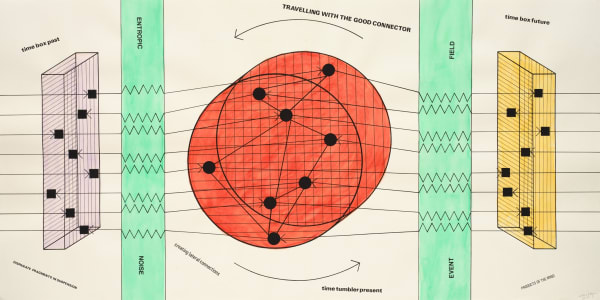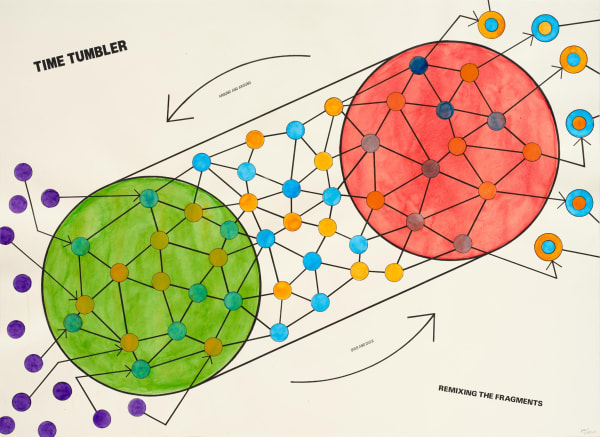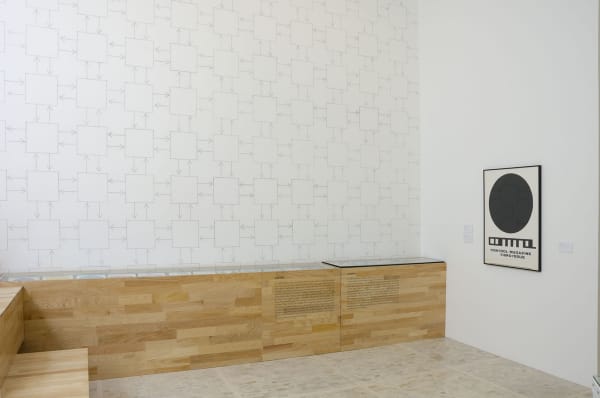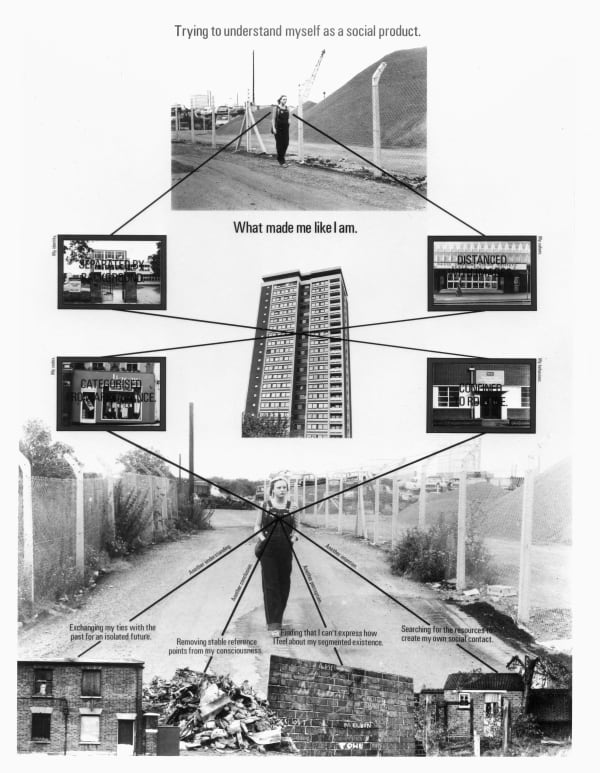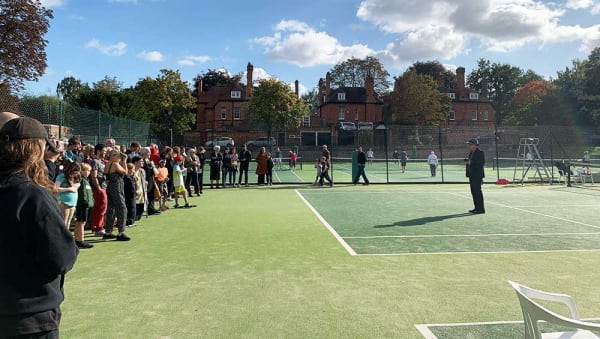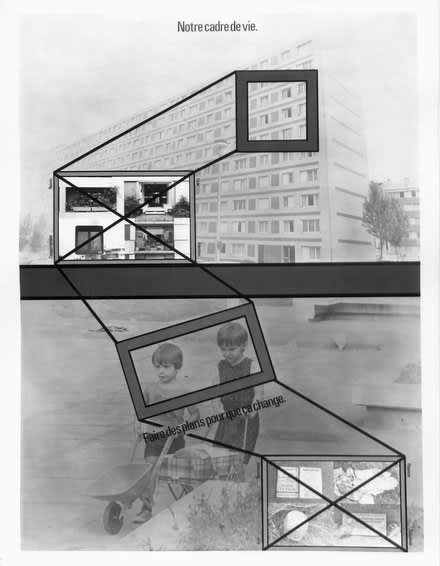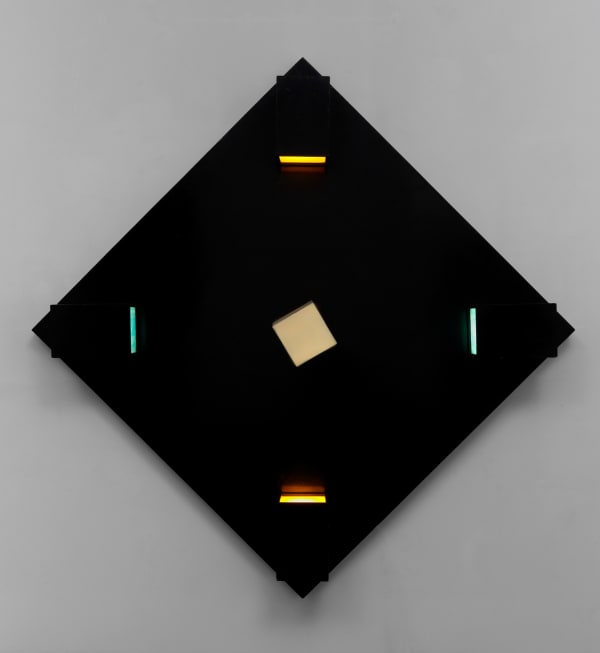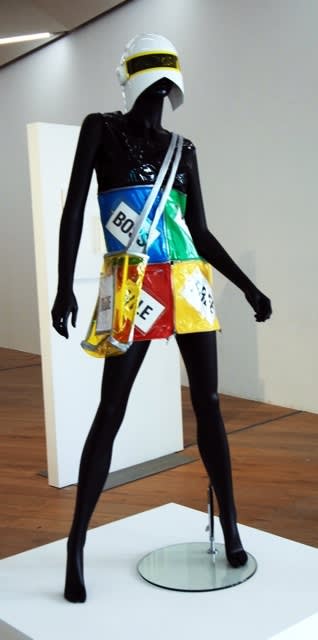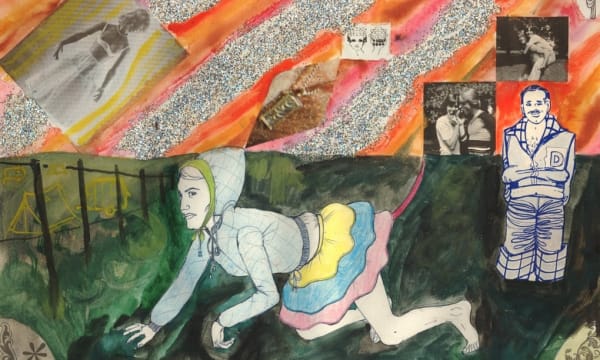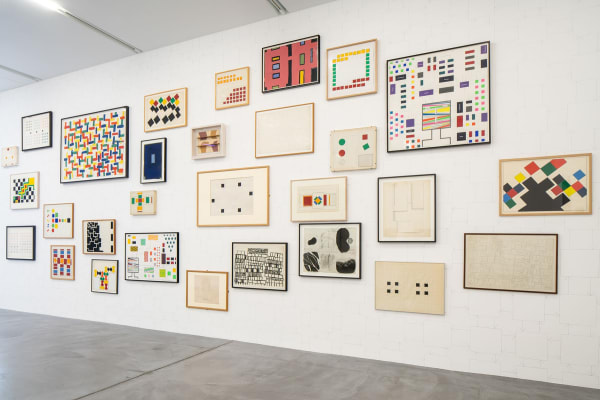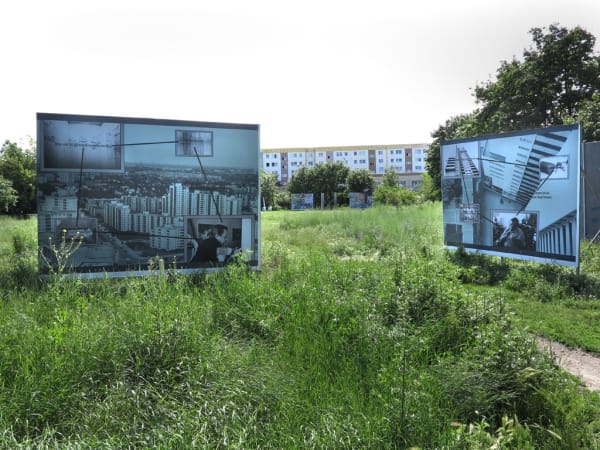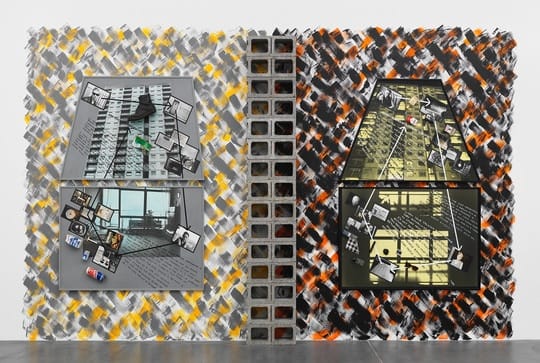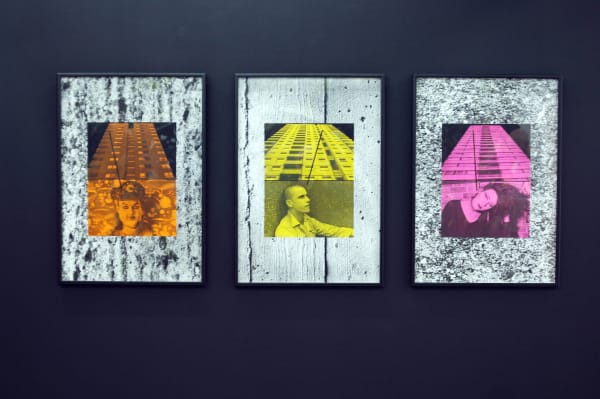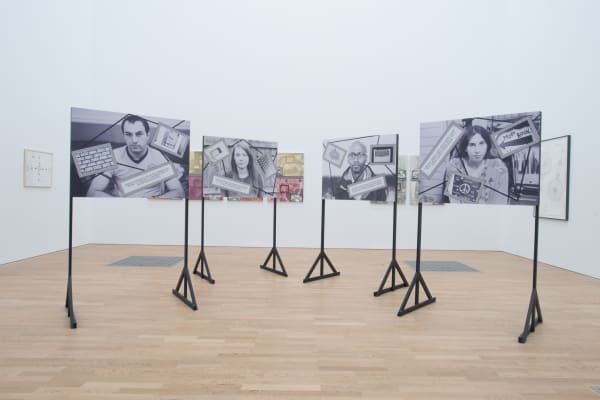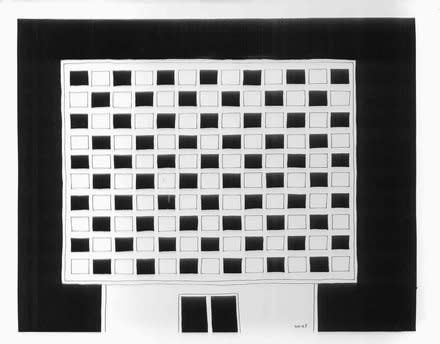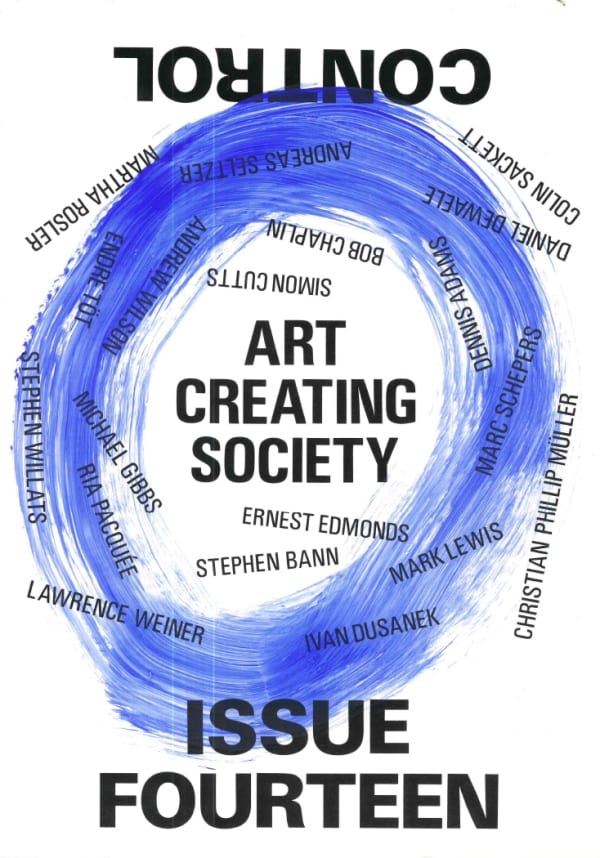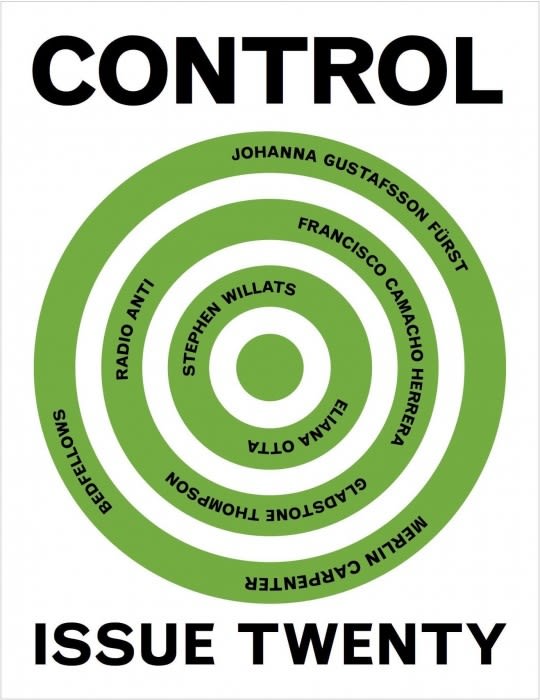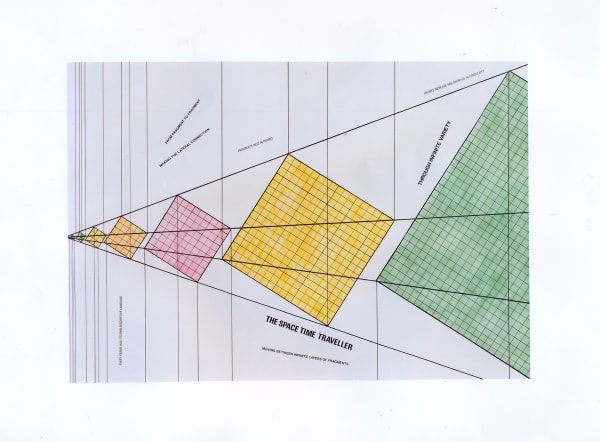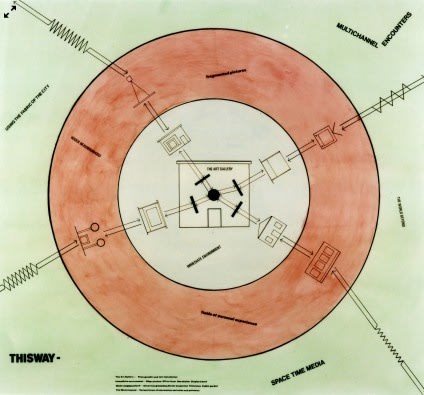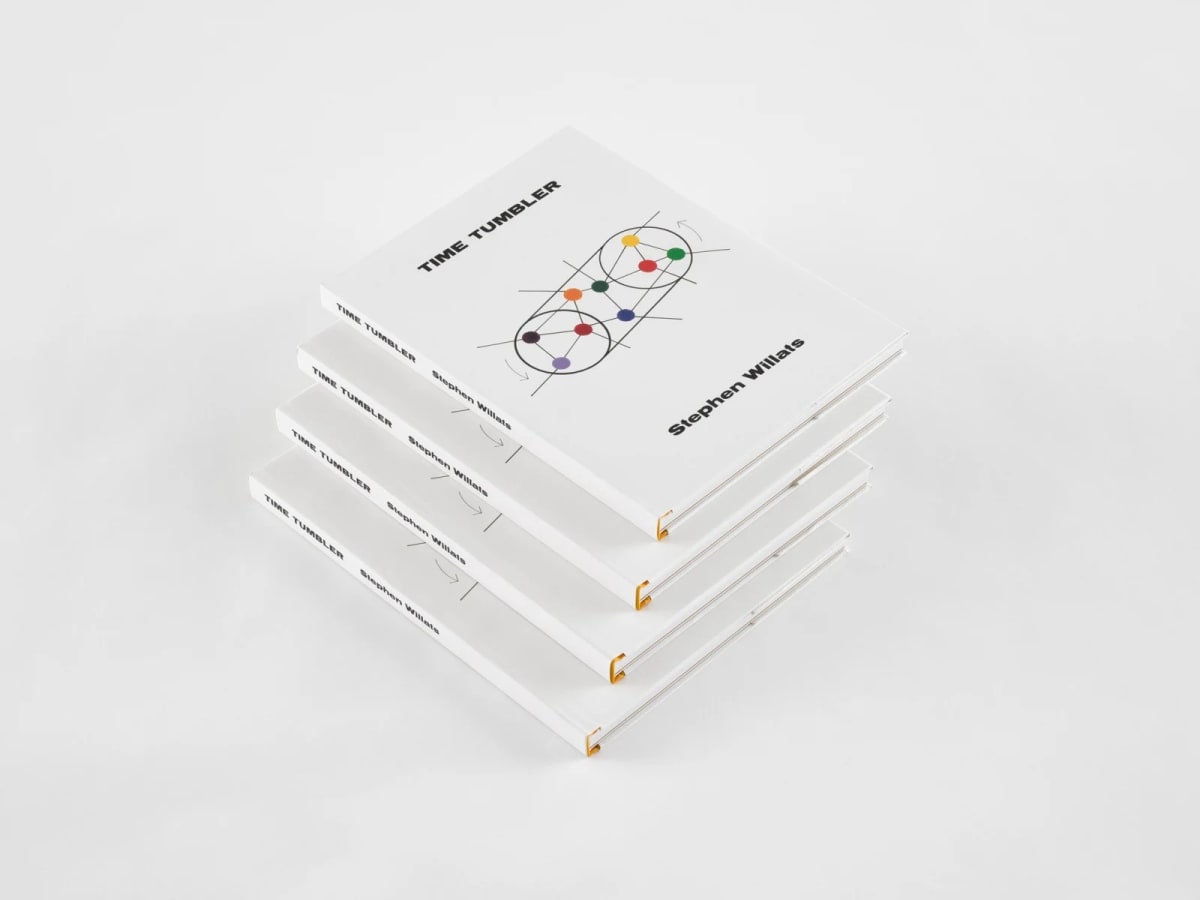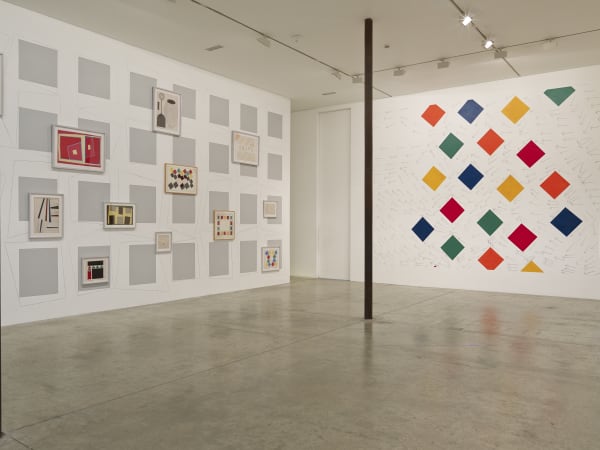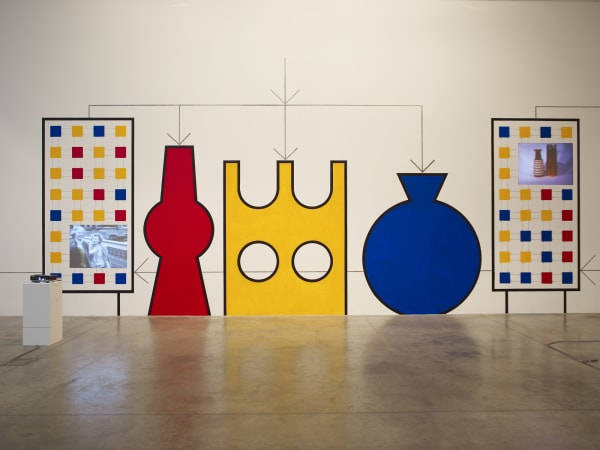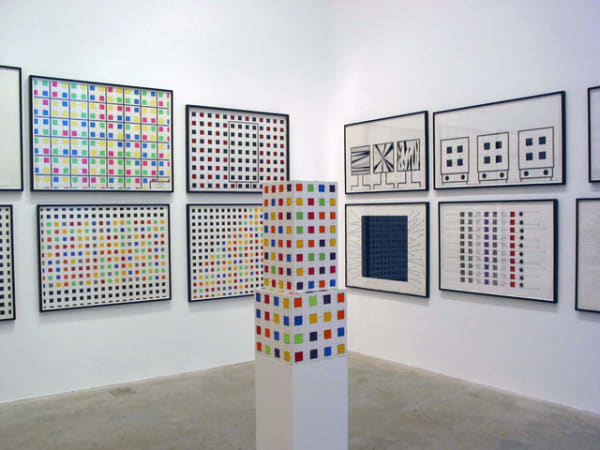Stephen Willats
-
About
Since the early 1960s, Stephen Willats has situated his pioneering practice at the intersection between art and other disciplines such as cybernetics, advertising systems research, learning theory, communications theory and computer technology. In so doing, he has constructed and developed a collaborative, interactive and participatory practice grounded in the variables of social relationships, settings and physical realities.
Willats creates multi-sensory, multi-dimensional environments to encourage viewers to engage with their own creative and cognitive processes. Using the fabric of society – the everyday – as a site of investigation, his work presents a vehicle of exchange through which viewers can re-examine and transform the way they perceive the fabric of existing reality.
For six decades, Willats has concentrated on ideas that today are ever-present in contemporary art: communication, social engagement, active spectatorship, and self-organisation, and has initiated many seminal multi-media art projects everywhere from tennis clubs and public galleries to inner city housing estates. Outside of the norms and conventions of an object-based art world, Willats has developed work which reacts against what he sees as the historical determinism within art. Rather than presenting visitors with icons of certainty he creates a random, complex environment which stimulates visitors to engage in their own creative process rather than merely submitting to passive observation.
Importantly, Willats represents particular individual relations in a generalised form, affirming that it is useful to consider social situations on both a universal and a personal level. Observations of the macro- and micro-scale, of the generic and the specific, and of engagement and distance in Willats' work serve to problematise and present various points of entry into contemporary social relationships, thereby providing a vision of how they could be community centred.
-
Biography
Stephen Willats was born in 1943 in London, where he continues to live and work.
Recent solo institutional exhibitions include The Social Resource Project for Tennis Clubs, Nottingham Trent University (2022); Languages of Dissent at Migros Museum, Zürich (2019). His work has also recently been featured in Coded: Art Enters the Computer Age, 1952 – 1982, Los Angeles County Museum of Art (2023); Light Works from the Tate Collection, Museum of Art Pudong, Shanghai, China; Rhythm and Geometry, Constructivist Art in Britain since 1951, Sainsbury Centre, Norwich (2021); Not Working – Artistic Production and Social Class, Kunstverein, Munich; What If … on Utopia in Art, Architecture and Design, Neues Museum, Nuremberg; Objects of Wonder: From Pedestal to Interaction, Aarhus Kunstmuseum, Denmark; Bodies – Cities: Collections and Excursions, Museum der Moderne, Salzburg (2020); Chicago Architecture Biennial (2019–20), Still Undead: Popular Culture in Britain Beyond the Bauhaus at Nottingham Contemporary (2019–20), Pushing Paper: Contemporary Drawing from 1970 to Now at the British Museum (2019–20), Objects of Wonder, British Sculpture 1950s–Present, featuring works from the Tate collection, at the PalaisPopulaire, Berlin (2019).
Previous solo exhibitions held at international institutions include Control, Tate Liverpool (2018); HUMAN RIGHT, mima, Middlesbrough (2017); THISWAY, INDEX, Stockholm (2016); Man from the 21st Century, Museo Tamayo Arte Contemporáneo, Mexico City (2014–15); Concerning our Present Way of Living, Whitechapel Gallery, London (2014); Control: Work 1962-69, Raven Row, London (2014); Conscious – Unconscious, In and Out the Reality Check, Modern Art Oxford, Oxford (2013); Stephen Willats: Surfing with the Attractor, South London Gallery, London (2012); COUNTERCONSCIOUSNESS, Badischer Kunstverein, Karlsruhe, Germany (2010); Assumptions and Presumptions, Art on the Underground, London (2007); From my Mind to Your Mind, Milton Keynes Gallery, (2007); How the World is and How it could be, Museum für Gegenwartskunst, Siegen (2006); Changing Everything, South London Art Gallery, (1998); Buildings & People, Berlinische Galerie, Berlin, (1993); Meta Filter and Related Works, Tate Gallery London, (1982); Concerning Our Present Way of Living, Stedelijk van Abbemuseum, Eindhoven, (1980); 4 Inseln, in Berlin, National Gallery, Berlin, (1980); Concerning our Present Way of Living, Whitechapel Art Gallery, London, (1979).
In 1965 Willats founded the magazine Control, which is still in publication.
-
News
-

Work by Stephen Willats features in Voice of Space at The Drawing Center
October 17, 2025On view from 17 October 2025–1 February 2026, the exhibition explores the diverse artistic responses to the mysteries at the intersection of human experience, belief and the unknown, focusing specifically on UFOs and paranormal phenomena.Read More -

Artforum reviews Stephen Willats: Time Tumbler
March 1, 2024 Read More -

Stephen Willats: Time Tumbler is reviewed by ArtReview
January 16, 2024The British conceptual artist reaches out to the community to find a new visual language At the heart of British conceptual artist Stephen Willats’s work...Read More -

Studio International reviews Stephen Willats: Time Tumbler
December 6, 2023As contemporary artists and curators work hard to make art and exhibitions more outward-facing, less self-referential, and actively engaging for diverse audiences, it is worth...Read More -

The Art Newspaper podcast with Stephen Willats
November 29, 2023An in-depth conversation with the British artist Stephen Willats, one of the leading figures in conceptual art in Britain, who addresses societal issues while exploring...Read More -

New publication – Stephen Willats: Time Tumbler
November 1, 2023Published on the occasion of the exhibition, this book features new writing on the artist by Bronaċ Ferran, John Kelsey, Jelena Kristic and Stephanie Willats....Read More -

Works by Kudzanai Violet-Hwami, Chris Ofili, Paula Rego and Stephen Willats feature in Tate Britain’s rehang
May 23, 2023Tate Britain has just opened a complete rehang of its collection — the first time in 10 years that the the gallery's free displays have...Read More -

Studio International interviews curator of exhibition Coded: Art Enters the Computer Age, 1952-1982
February 16, 2023Read an interview with Leslie Jones, curator of the group exhibition Coded: Art Enters the Computer Age, 1952-1982, featuring work by Stephen Willats. On view...Read More -

Stephen Willats features in the LACMA exhibition Coded: Art Enters the Computer Age, 1952–1982
February 12, 2023The exhibition (12 February–2 July 2023) explores how the rise of computer technology, together with its emergence in popular consciousness, impacted the making of art...Read More -

Stephen Willats features in A Tall Order! – Rochdale Art Gallery in the 1980s
February 9, 2023A Tall Order! is an invigorating look at the artwork made and exhibited at Touchstones during the 1980s, when it was known as Rochdale Art...Read More -

Work by Stephen Willats on display at Tate Britain
January 11, 2023Stephen Willats, Living with Practical Realities , 1978, is currently on view at Tate Britain as part of their display Walk Through British Art ....Read More -

Stephen Willats: Social Resource Project for Tennis Clubs is reviewed by Tank Magazine
December 7, 2022‘Even 50 years on, the project continues to change perceptions and increase understanding of the environment that people too often take for granted.’ Christabel Stewart...Read More -

Studio International reviews Stephen Willats: Social Resource Project for Tennis Clubs
November 2, 2022‘The approach taken to the display of this material has achieved a degree of renewal that loops aspects of the past into the present and...Read More -

Stephen Willats: Social Resource Project for Tennis Clubs is reviewed by LeftLion
October 18, 2022‘Showing fifty years after its inception, the exhibition at Bonington Gallery is the meridian of archived material from 1971 and 1972 – the years in...Read More -

Stephen Willats: Social Resource Project for Tennis Clubs, now open at Bonington Gallery, Nottingham
October 3, 2022Social Resource Project for Tennis Clubs is a solo exhibition by artist Stephen Willats. A pioneer of international conceptual art, Stephen Willats has spent six...Read More -

Work by Stephen Willats features in The Art of Teaching and Learning. A School for Creators
February 5, 2022The group exhibition at Centre Pompidou Metz (5 February–29 August 2022) explores the non-schools, anti-universities, talking circles, educational walks and video universities that emerged in...Read More -

Stephen Willats features in Rhythm and Geometry: Constructivist art in Britain since 1951 at Sainsbury Centre
October 2, 2021Drawn from the Sainsbury Centre collection, the exhibition (2 October 2021–30 January 2022) celebrates the abstract and constructed art made and exhibited in Britain since...Read More -

Do Ho Suh and Stephen Willats feature in the Chicago Architecture Biennial
September 17, 2019Titled …and other such stories , the 2019 Chicago Architecture Biennial (19 September 2019–5 January 2020) traces dialogues between various practices and the questions they...Read More -

Stephen Willats features in Still Undead: Popular Culture in Britain Beyond the Bauhaus at Nottingham Contemporary
September 1, 2019Still Undead (21 September 2019–12 January 2020) explores how Bauhaus ideas and teaching lived on in Britain, via pop culture and art schools. This exhibition...Read More -

Pushing Paper: Contemporary Drawing from 1970 to Now featuring Grayson Perry and Stephen Willats at the British Museum
August 19, 2019Celebrating the power of contemporary drawing, this display at the British Museum (12 September 2019–12 January 2020) explores how artists have used the medium to...Read More -

Kunstbulletin reviews Stephen Willats: Languages of Dissent at Migros Museum
July 31, 2019Writing about the artist's major survey at Migros Museum für Gegenwartskunst , Zürich (on view until 18 August 2019), Kunstbulletin notes: 'It came as a...Read More -

Stephen Willats: CONTROL Magazine launch
July 22, 2019The launch of CONTROL Twenty One takes place on Monday 29 July, 6:30–8:30pm at Chalton Gallery, London NW1. This new issue of CONTROL presents models...Read More -

Billboards by Stephen Willats feature as part of Going out of Circles, Berlin
June 14, 2019Housing estates are comparable to one another – even across continents. They are often organized in concentric circles around the core city. But even within...Read More -

Stephen Willats: Languages of Dissent at Migros Museum, Zürich
May 25, 2019This exhibition (25 May–18 August 2019) is themed around two aspects of Willats' practice: cybernetics, the regulation and control of dynamic systems, which enables him...Read More -

MK Gallery reopens with The Lie of the Land, featuring Stephen Willats
March 11, 2019Following a major expansion, the gallery reopens on 16 March 2019 with an exhibtion that aims to capture a visionary spirit of grand designs tempered...Read More -

Stephen Willats features in Objects of Wonder, British Sculpture 1950s – Present at the PalaisPopulaire, Berlin
February 1, 2019Objects of Wonder British Sculpture 1950s - Present February 1 - May 27, 2019 Art from the Tate Collection With around 75 masterworks from the...Read More -

Stephen Willats in FRONT International: Cleveland Triennial for Contemporary Art
July 14, 2018Titled An American City: Eleven Cultural Exercises, the inaugural edition of the Cleveland Triennial (14 July–30 September 2018) comprises artist commissions, performances, films, and public...Read More -

Stephen Willats and Grayson Perry feature in Do I Have to Draw You a Picture? at Heong Gallery, Cambridge
June 16, 2018The exhibition (16 June-7 October 2018) engages with themes of communication, breakdown of communication, and isolation. It brings together a collection of contemporary American and...Read More -

Stephen Willats: Control at Tate Liverpool
April 25, 2018A project and events programme (25 April – 16 May 2018) devoted to Control Magazine. Founded in 1965 by Stephen Willats, Control remains one of...Read More -

Stephen Willats is featured in Fashioned from Nature at the V&A
April 6, 2018Willats’ Variable Sheets/Optical Shift , 1965, is included in the exhibition (21 April 2018 – 27 January 2019), which invites visitors to think about the...Read More -

Stephen Willats in Space & Photography at Museum der Moderne, Salzburg
November 25, 201725 November 2017 – 4 March 2018 This exhibition probes the manifold interrelations between space and photography. In the early days of photography, questions of...Read More -

Stephen Willats in Idea Home Show at Mima
October 19, 201721 October 2017 – 18 February 2018 Idea Home Show takes a political look at how residents and practitioners working between art architecture and activism...Read More -

Stephen Willats in Open Codes: Living in Digital Worlds at ZKM Karlsruhe
October 9, 2017Today we live in a globalised world that is controlled and created by digital codes. From communication to transportation (of people, goods, and messages), everything...Read More -

Stephen Willats included in Everything we see could also be otherwise (My sweet little lamb) at The Showroom
September 19, 2017The Showroom presents Everything we see could also be otherwise (My sweet little lamb ), a contextualisation and rethinking of the Vienna-based Kontakt Art Collection....Read More -

Stephen Willats: Human Right book launch
April 28, 2017The launch of Stephen Willats' new book, HUMAN RIGHT, which accompanies the artist's current exhibition at Middlesborough Institute of Modern Art, will take place on...Read More -

Control Issue Twenty Launch
February 13, 2017Launch: 6 - 9pm 17 February Laure Genillard Gallery 2 Hanway Place London W1T 1HB Control Magazine is seen as a vehicle for creating networks...Read More -

Stephen Willats: Human Right, a major survey exhibition at Mima
February 8, 2017Human Right surveys Stephen Willats’ practice from the late 1970s to the present day. The exhibition examines the relationship between personal narratives and social conditions....Read More -

Stephen Willats included in This Way Out of England: Gallery House in Retrospect at Raven Row
January 20, 201710 February to 26 March 2017 Over seven weekends Raven Row celebrates Gallery House, one of the most influential and extraordinary contemporary art spaces in...Read More -

Stephen Willats in Art in Europe 1945-1968: Facing the Future at ZKM Karlsruhe
November 2, 2016The work of Stephen Willats is now on view at ZKM Karlsruhe , in Art in Europe 1945–1968: Facing the Future (22 October 2016 -...Read More -

Stephen Willats: Vision and Reality publication reviewed in the TLS
October 5, 2016Estates of the Nation By Lynsey Hanley The artist Stephen Willats first came to English council housing not as a tenant but as someone who...Read More -

Stephen Willats: Conceptual Art in Britain 1964-1979
April 12, 201612 April - 29 August 2016. CONCEPTUAL ART IN BRITAIN 1964–1979 See the works that changed the way we think about art today. In the...Read More -

Stephen Willats interviewed in Kunstkritikk
March 18, 2016Ten Questions: Stephen Willats. By Stefanie Hessler. Stephen Willats’ artistic work is concerned with people’s lives. For over fifty years, the British conceptual artist has...Read More -

Stephen Willats reviewed in Art in America
December 28, 2011By Charles Marshall Schultz. Data collection and organization is an art form at which the British conceptualist Stephen Willats excels. His solo exhibition 'The Strange...Read More
-
-
Books
-
Gallery Exhibitions
-

Stephen Willats: TIME TUMBLER
22 Nov 2023 – 13 Jan 2024 London Gallery IVictoria Miro is delighted to present an exhibition by pioneering British conceptual artist Stephen Willats on the occasion of his eightieth birthday. Bringing together new works and seminal examples from...Learn More -

Stephen Willats: REPRESENTING THE POSSIBLE
13 Mar – 17 Apr 2014 London Gallery IAn exhibition which brings together previously unseen works on paper from the 1960s and the present day in a specially conceived installation. Willats' career is also currently celebrated in two...Learn More -

Stephen Willats: THE WORLD AS IT IS AND THE WORLD AS IT COULD BE
7 May – 12 Jun 2010 London Gallery IFrom the 1960s until today, London-based conceptual artist Stephen Willats has concentrated on ideas that today are ever-present in contemporary art: communication, social engagement, active spectatorship, and self-organization. Stephen Willats...Learn More -

Stephen Willats: From My Mind To Your Mind
2 – 30 Sep 2006 London Gallery IDuring the sixties and early seventies, Stephen Willats was one of the very few serious representatives of international Concept Art in England. Drawing upon wide-ranging artistic means, Willats attempts to...Learn More -

Stephen Willats: Through Your Symbolic World
11 Sep – 8 Oct 2002 London Gallery I'Every cultural landscape requires its signposts, not just to get around in the present, to find out where and what things are, but to point to a vision of the...Learn More -
Works on Paper: (From Acconci to Zittel)
27 Jun – 15 Sep 2001 London Gallery IGiovanni Anselmo, Alex Katz, Lisa Yuskavage, Vito Acconci, Henry Moore, Dawn Mellor, Nicolas de Stael, Cecily Brown, Karen Kilimnik, Sue Williams, Inka Essenhigh, Rosemarie Trockel, John Currin, David Hockney David Smith, Paul Klee, Verne Dawson, Sonia Delaunay-Terk, Stephen Willats, Terry Winters, Ernesto Neto, Peter Lanyon, Chantal Joffe, Alighiero E Boetti, Chris Ofili, Udomsak Krisanamis, Lazar el Lissitsky, Fiona Banner, Glenn Ligon, Kasimir Malevich, Tal R, Dinos and Jake Chapman, Anne Chu, Peter Doig, Tim Gardner, Stanley Brouwn, Takashi Murakami, Yayoi Kusama, Man Ray, Keir Smith, Sol Lewitt, Wayne Gonzales, Christo, William Kentridge, David Harrison, Nen Nicholson, Richard Long, Martin Creed, Abigail Lane, Richard Tuttle, Carl Andre, Andrea Zittel, Robin Lowe, Raymond Pettibone, Gerwald Rochenschaub. -

Raw
7 May – 30 Jun 2000 London Gallery IYayoi Kusama. Francesca Woodman, Robin Lowe, Adriana Varejão, Isaac Julien, Doug Aitken, Abigail Lane, Hadrian Pigott, Brad Lochore, Cecily Brown, Chris Ofili, Andreas Gursky, Ian Hamilton Finlay, Inez van Lamsweerde,...Learn More -
Stephen Willats: Street Talk
8 Jul – 1 Aug 1997 Victoria Miro Cork StreetStephen Willats presents three major new works which celebrate the richness of urban life in London where each individual builds his own space and reality in the face of a bombardment of everyday sensations. -
Temples
5 – 28 Jul 1995 Victoria Miro Cork StreetJuren Albrecht, Bernd & Hiller Becher, Thomas Demand, Andreas Gursky, Ian Hamilton Finlay, Alex Hartley, Keir Smith, Stephen Willats -
Stephen Willats: Random Life
15 Apr – 13 May 1994 Victoria Miro Cork Street -
Instructions and Diagrams
9 Apr – 8 May 1992 Victoria Miro Cork StreetStanley Brouwn, Jake Chapman, Alan Charlton, Jakie Ferrara, Ian Hamilton Finlay, Richard Long, Robert Mangold, Robert Morris, Matt Mullican, Alan Murray, Simon Patterson, Fred Sandback, Franz Erhard Walther, Lawrence Weiner, Stephen Willats
-
-
Contact Form
Contact us regarding available works by Stephen Willats



